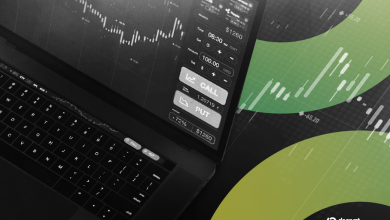The Future Of Crypto Depends On Auditable Privacy

Historically, every financial system that existed made a promise about privacy. From the earliest days of trade, gold coins and cash were a truly private way of transacting. In a more modern era, banks would tell customers their account balances are confidential, and credit card networks would assure merchants that transaction details stay between relevant parties. The entire financial system was designed with privacy as one of the key underlying principles, and somehow along the way, blockchains broke that promise.
For more than a decade, crypto has operated under a transparency-first model. Every transaction, every balance, and every counterparty relationship sits in plain view on a public ledger, no matter whether the chain operates as an L1 or an L2. The justification was simple: transparency prevents fraud and enables trustless verification. But as stablecoins process over $27 trillion in annual volume and institutions prepare to move treasury operations onchain, that trade-off no longer holds. Privacy is no longer a luxury feature for the few. Instead, it is now table stakes for any system that wants to handle real money at scale.
What The First Decade of Privacy Taught Us
The quest for onchain privacy is older than most people realize. As I was writing my recent report on the subject, I found that not many people know the full story of how we got to where we are today.
In the 1990s, cryptographer David Chaum built DigiCash, a system that used blind signatures to hide user identities in digital payments. It worked technically but failed commercially, attracting only about 5,000 users before filing for bankruptcy in 1998. Chaum later reflected that it was hard to explain the importance of privacy to the average consumer back then, leading to its downfall.
Bitcoin brought digital currency back, but privacy wasn’t the priority – decentralization and censorship resistance were. That led to the first wave of privacy tools: mixers like CoinJoin, which pooled transactions to obscure the link between sender and receiver. They worked for a small set of technically sophisticated users, but they were clunky, often flagged by exchanges, and frequently associated with illicit activity.
Monero, launched in 2014, took a different approach. It made privacy the default, using ring signatures and stealth addresses to hide transaction details at the protocol level. Technically, it succeeded, but practically, it struggled. Regulators lumped it in with tools that facilitated money laundering, and many exchanges delisted it. Most major U.S. platforms don’t offer Monero trading as of today (October 2025). The U.S. IRS once offered $625,000 to anyone who could break its anonymity, which speaks to both its strength and its problem: privacy so absolute that it conflicts with the regulated world most businesses operate in.
Then came Tornado Cash, a smart contract mixer on Ethereum. It was elegant: users deposited funds, received a cryptographic note, and later withdrew to a fresh address with no onchain link between the two. For a time, it worked. About $2.8 billion flowed through Tornado Cash between 2019 and 2022. But when the North Korean Lazarus Group laundered over $450 million in stolen funds through the protocol, the U.S. Treasury sanctioned it, and its developers were arrested, with the frontend taken down for a period of time. By late 2022, Tornado Cash was effectively a ghost town, and the lesson was clear: absolute anonymity invites regulatory action that kills adoption.
The Path Forward: Privacy That Audits Can See
The next generation of privacy solutions learned from some of those failures. The goal was no longer to hide everything from everyone, but to give users and businesses control over who sees what, and when. That means building systems where transactions are private by default but can be selectively disclosed to auditors, regulators, or counterparties when needed.
Scroll’s Cloak (a project I co-founded) framework is one example of this approach. It operates as a private ledger, and uses zero-knowledge proofs to hide transaction details while keeping them visible to authorized parties, such as the permissioned sequencer that processes transactions or an auditor. The public chain only sees a proof that the transaction is valid, without learning anything about its contents.
This design solves two problems at once – for users and businesses, it delivers the confidentiality that traditional finance takes for granted; and for regulators or compliance teams, it preserves the ability to investigate suspicious activity, enforce sanctions, and verify that rules are being followed. It’s privacy with accountability, not privacy as a shield for crime.
After years of research and seeing what works (and what didn’t), that distinction matters more than the underlying technology itself. By now, it’s clear that institutions won’t route serious volumes through systems that expose every treasury move to competitors, but they also won’t use systems that make compliance impossible. The middle path, auditable privacy, is the only one that is set to work at scale.
Privacy Meets Stablecoins: The First Neodollar
It’s clear that stablecoins have already found product-market fit. They move faster than banks, cost less than credit cards, and work anywhere with an internet connection. But looking at the layer beneath what’s easily visible, one can analyse who the major users of stablecoins are: traders hedging volatility, crypto natives moving between protocols, and businesses in high-inflation markets desperate for dollar access. It is real demand, but it’s not something we can yet call mass adoption.
And one of the reasons is quite simple — stablecoins today ask people to choose between usability and privacy, or between holding value and earning yield. Most live on transparent chains where every transaction is public — and most require users to manage gas tokens, understand wallet infrastructure, and accept that their financial activity is permanently searchable by anyone with a block explorer.
Recent launches have tried to solve parts of this puzzle. Ethena’s synthetic dollar, USDe, offers yield through delta-neutral strategies, giving holders returns without leaving the stablecoin. Neutrl is a market-neutral synthetic dollar designed to unlock untapped yield opportunities in OTC and altcoin markets, aiming to democratise high yield. Both represent meaningful progress in making stablecoins more useful. But neither addresses the privacy gap that keeps most people from moving their full financial lives onchain.
A recent solution is the neodollar, USX, which was designed to address all of the above pain points (Disclosure: USX is built on Scroll, a blockchain protocol I co-founded). It’s a stablecoin built for people who don’t want to think about crypto infrastructure at all — it’s stable, spendable, private, and productive — it works like digital cash always should have.
The Trillion-Dollar Question
Privacy is no longer a feature request from a small group of crypto natives. For crypto to survive and truly thrive, we have to think of it as a fundamental requirement.
Considering what’s sitting on the sidelines — global remittances reached $905 billion in 2024, U.S. 401(k) plans hold $8.9 trillion, total retirement assets crossed $43.4 trillion earlier this year — the timing is now crucial to bring the topic of privacy back to its spotlight. Projections suggest tokenized real-world assets could hit $15.6 trillion by 2030. Even stablecoins, at $302 billion in supply, haven’t even scratched the surface.
We have spent the past 5+ years perfecting the infrastructure, making each chain more efficient and settlement faster. But efficiency alone won’t pull trillions of dollars onchain. People and institutions need privacy that doesn’t force them to choose between transparency and usability.
The pieces are slowly falling into place. Regulatory clarity is emerging worldwide, and it’s clear that many institutions are paying attention. What determines whether this becomes the foundation for a more efficient global financial system, or stays confined to a community willing to trade privacy for permissionless access, comes down to whether we can deliver the confidentiality that every other payment system treats as non-negotiable.
That choice is ours to make.




